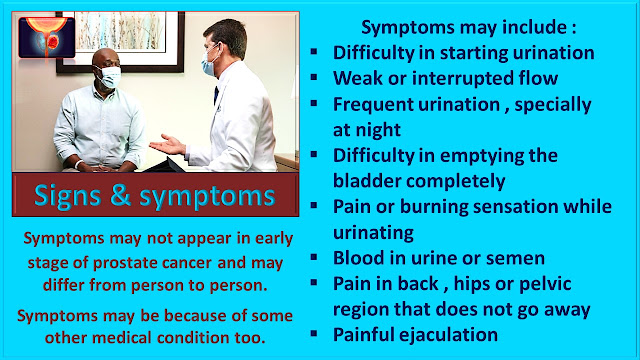Medical Treatments in India with Best Doctors in Best Indian Hospitals.
One of the most important sensory organs we have are our eyes.
Who are the specialist doctors treating Eye disorders?
The Doctors which treat eye disorders are called Ophthalmologists. The branch of medicine which deals with diagnosing the diseases and provides medical treatment for eyes is ophthalmology.
At Complete Medicare Solutions we are associated with Best and well equipped eye care centers of India. Our associated doctors are the best and most experienced eye care specialists doctors of India.
Understanding Our Eyes: The human eye is a complex organ that works by reacting to light, processing it and transmitting it to brain and helps us in seeing. Human eye consists of major parts listed below:
1. The Orbit: The orbit is a skeletal structure just like a socket; eye ball rests in this socket that protects the eye from injury. Surrounding the eye within the socket is a layer of fatty tissues, cushioning the eyeball and allowing it to move smoothly within the orbit.
2. The Eye or Eye ball: The Human eyes consist of three layers. The outermost layer is called as fibrous tunic and is composed of cornea and sclera. Middle layer is called vascular tunic and is made up of choroid, ciliary body and iris. The innermost layer of eye is called retina. The eyeball consists of three chambers filled with eye fluid named Anterior chamber (between the cornea and iris) ,Posterior Chamber (between the iris and lens) and Vireous Chamber (between the lens and retina). The anterior and posterior chambers are filled with aqueous humour while vitreous chamber is filled with thicker and transparent gel like fluid called vitreous humour.
3. The Optic Nerve: The Optic Nerve runs from the back of the eyeball and connects to the brain and acts as a conduit, transmitting visual information into the brain.
4. The Cornea: Cornea is the clear portion of eye that covers the iris and the pupil and takes up about one-sixth of the eye.
5. The Iris and Pupil: The iris is the colored ring of tissue that lies beneath the cornea. The pupil is located in the centre of the iris and acts like a camera aperture, allowing light to enter the eye, adjusting to control the flow of light into the eye. In bright conditions, the pupil closes down, reducing the amount of light entering the eye and protecting the delicate nerves from being damaged. In the dark, the reverse happens to allow what light there is to enter the eye.
6. Lens and Retina: Just behind the iris is the lens. The lens focuses rays of light onto the retina, which is a light-sensitive nerve tissue that contains photosensitive cells called rods and cones. The Retina converts light into electrical signals that are carried to the brain by the optic nerve.
7. Eyelids: Eyelids protect the surface of the eye from scratches, dust and foreign objects and also help to lubricate the surface of the eye.
8. Tear Glands: Tears are provided by several glands in and around the eyelids. Tears are around 99% water and keep the cornea moist, as well as protect the delicate cells on the cornea.
Common Eye diseases and their treatments:
1. Myopia: is a medical condition in which one can see nearby objects clearly but far away objects appear fuzzy or unclear. Myopia can be treated by using eye glasses or contact lenses prescribed by an eye specialist after evaluation of diseased condition. Refractive or Laser eye surgery are permanent cure for myopia. The person who had refractory or laser surgery for Myopia generally does not require wearing eye glasses or lenses. At Complete Medicare Solutions we are associated with best Eye surgery specialists of India for our global guests.
2. Hyperopia: is a medical condition in which one can see far away objects clearly but find it difficult to focus on nearby objects. Hyperopia can be treated by using eye glasses or contact lenses prescribed by an eye specialist after evaluation of diseased condition. It can also be corrected with Laser-assisted in-situ keratomileusis (LASIK) .
3. Cataract: Cataract is a diseased eye condition where the natural lens of eye, which is transparent, gets opaque. Natural aging is one of the common causes of cataract but it is aggravated by smoking, high blood sugar, high blood pressure, use of steroid medications, hormone replacement therapy. Cataract is corrected by replacing diseased cloudy or opaque natural lens with an artificial lens (IOL).
At Complete Medicare Solutions we are associated with best eye care treatment centers in India and best Indian eye surgeons. Cataract surgery are performed by phacoemulsification method using the latest in world Femtosecond Laser technology for more precise cataract surgery results. We offer a wide range of premier intraocular lenses (IOL) depending on need and budget of our global guests. The latest technologies ensure that patient can go back home within hours of surgery, no need of hospitalization, smaller incision and very quick recovery time. A person needing cataract surgery for both eyes usually is advised for a spacing of at least one week for surgery of both eyes.
4. Glaucoma: Glaucoma is a medical condition where an increased intraocular pressure damages the optic nerve causing vision problems. If timely treatment is not given for glaucoma, it can cause complete blindness. When conservative treatments including trabeculectomy surgery to treat glaucoma fails a newer Tube-shunt (Seton Glaucoma surgery) is performed to treat Glaucoma. Our Glaucoma experts also perform Trabeculotomy for Congenital Glaucoma. At Complete Medicare Solutions we are associated with eyes care centers with Best Indian Glaucoma specialists for best Glaucoma treatment in India for our global guest.
5. Cornea treatments: At Complete Medicare Solution our Associated Best Indian Eye Specialists offers medical and surgical treatment of problems involving the cornea and ocular surface.Our Specialists are quite adept at performing Corneal Transplantation, Penetrating keratoplasty, Lamellar keratoplasty, Endothelial keratoplasty(DSAEK), Keratoprosthesis (Artificial cornea), Tissue adhesive application to seal corneal perforation, Scleral grafting and Corneal limbal and amniotic membrane transplants for ocular surface reconstruction in severe ocular surface disease.
6. Strabismus treatment: Our expert Eye specialists also provides medical and surgical treatments for squint eye or strabismus.

One of the most important sensory organs we have are our eyes.
Who are the specialist doctors treating Eye disorders?
The Doctors which treat eye disorders are called Ophthalmologists. The branch of medicine which deals with diagnosing the diseases and provides medical treatment for eyes is ophthalmology.
At Complete Medicare Solutions we are associated with Best and well equipped eye care centers of India. Our associated doctors are the best and most experienced eye care specialists doctors of India.
Understanding Our Eyes: The human eye is a complex organ that works by reacting to light, processing it and transmitting it to brain and helps us in seeing. Human eye consists of major parts listed below:
1. The Orbit: The orbit is a skeletal structure just like a socket; eye ball rests in this socket that protects the eye from injury. Surrounding the eye within the socket is a layer of fatty tissues, cushioning the eyeball and allowing it to move smoothly within the orbit.
2. The Eye or Eye ball: The Human eyes consist of three layers. The outermost layer is called as fibrous tunic and is composed of cornea and sclera. Middle layer is called vascular tunic and is made up of choroid, ciliary body and iris. The innermost layer of eye is called retina. The eyeball consists of three chambers filled with eye fluid named Anterior chamber (between the cornea and iris) ,Posterior Chamber (between the iris and lens) and Vireous Chamber (between the lens and retina). The anterior and posterior chambers are filled with aqueous humour while vitreous chamber is filled with thicker and transparent gel like fluid called vitreous humour.
3. The Optic Nerve: The Optic Nerve runs from the back of the eyeball and connects to the brain and acts as a conduit, transmitting visual information into the brain.
4. The Cornea: Cornea is the clear portion of eye that covers the iris and the pupil and takes up about one-sixth of the eye.
5. The Iris and Pupil: The iris is the colored ring of tissue that lies beneath the cornea. The pupil is located in the centre of the iris and acts like a camera aperture, allowing light to enter the eye, adjusting to control the flow of light into the eye. In bright conditions, the pupil closes down, reducing the amount of light entering the eye and protecting the delicate nerves from being damaged. In the dark, the reverse happens to allow what light there is to enter the eye.
6. Lens and Retina: Just behind the iris is the lens. The lens focuses rays of light onto the retina, which is a light-sensitive nerve tissue that contains photosensitive cells called rods and cones. The Retina converts light into electrical signals that are carried to the brain by the optic nerve.
7. Eyelids: Eyelids protect the surface of the eye from scratches, dust and foreign objects and also help to lubricate the surface of the eye.
8. Tear Glands: Tears are provided by several glands in and around the eyelids. Tears are around 99% water and keep the cornea moist, as well as protect the delicate cells on the cornea.
Common Eye diseases and their treatments:
1. Myopia: is a medical condition in which one can see nearby objects clearly but far away objects appear fuzzy or unclear. Myopia can be treated by using eye glasses or contact lenses prescribed by an eye specialist after evaluation of diseased condition. Refractive or Laser eye surgery are permanent cure for myopia. The person who had refractory or laser surgery for Myopia generally does not require wearing eye glasses or lenses. At Complete Medicare Solutions we are associated with best Eye surgery specialists of India for our global guests.
2. Hyperopia: is a medical condition in which one can see far away objects clearly but find it difficult to focus on nearby objects. Hyperopia can be treated by using eye glasses or contact lenses prescribed by an eye specialist after evaluation of diseased condition. It can also be corrected with Laser-assisted in-situ keratomileusis (LASIK) .
3. Cataract: Cataract is a diseased eye condition where the natural lens of eye, which is transparent, gets opaque. Natural aging is one of the common causes of cataract but it is aggravated by smoking, high blood sugar, high blood pressure, use of steroid medications, hormone replacement therapy. Cataract is corrected by replacing diseased cloudy or opaque natural lens with an artificial lens (IOL).
At Complete Medicare Solutions we are associated with best eye care treatment centers in India and best Indian eye surgeons. Cataract surgery are performed by phacoemulsification method using the latest in world Femtosecond Laser technology for more precise cataract surgery results. We offer a wide range of premier intraocular lenses (IOL) depending on need and budget of our global guests. The latest technologies ensure that patient can go back home within hours of surgery, no need of hospitalization, smaller incision and very quick recovery time. A person needing cataract surgery for both eyes usually is advised for a spacing of at least one week for surgery of both eyes.
4. Glaucoma: Glaucoma is a medical condition where an increased intraocular pressure damages the optic nerve causing vision problems. If timely treatment is not given for glaucoma, it can cause complete blindness. When conservative treatments including trabeculectomy surgery to treat glaucoma fails a newer Tube-shunt (Seton Glaucoma surgery) is performed to treat Glaucoma. Our Glaucoma experts also perform Trabeculotomy for Congenital Glaucoma. At Complete Medicare Solutions we are associated with eyes care centers with Best Indian Glaucoma specialists for best Glaucoma treatment in India for our global guest.
5. Cornea treatments: At Complete Medicare Solution our Associated Best Indian Eye Specialists offers medical and surgical treatment of problems involving the cornea and ocular surface.Our Specialists are quite adept at performing Corneal Transplantation, Penetrating keratoplasty, Lamellar keratoplasty, Endothelial keratoplasty(DSAEK), Keratoprosthesis (Artificial cornea), Tissue adhesive application to seal corneal perforation, Scleral grafting and Corneal limbal and amniotic membrane transplants for ocular surface reconstruction in severe ocular surface disease.
6. Strabismus treatment: Our expert Eye specialists also provides medical and surgical treatments for squint eye or strabismus.













































